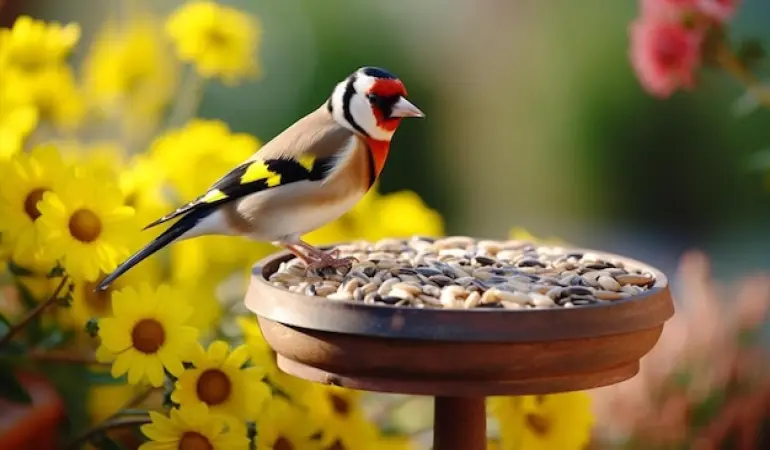How to Attract Birds to Your Garden This Winter
As winter settles in, birds face a tough challenge finding food and shelter. Attracting them to your garden not only brings life to the quiet season but also supports their survival during these harsh months. Here’s how you can make your garden a warm, welcoming space for winter birds.
October 31, 2024 18:15
1. Provide High-Energy Food
To stay warm, birds need high-energy foods that are rich in fats. Stock up on these food types to attract a variety of birds:
- Seeds: Black sunflower seeds, nyjer seeds, and millet are popular with many species.
- Nuts: Crushed peanuts, almonds, and hazelnuts are nutritious snacks.
- Suet and Fat Balls: These are great for providing birds with essential fats.
- Fruit: Dried fruits, apples, and raisins attract robins, waxwings, and other species.
Place these foods in accessible feeders or directly on a flat surface where birds can spot them easily.
2. Provide Fresh Water Sources
In winter, water sources freeze, making it difficult for birds to find fresh water for drinking and bathing. Set up a birdbath in a sheltered area, ideally with a bird-safe heater, to keep the water from freezing. Be sure to change the water frequently to keep it clean.
3. Create Sheltered Spaces
Cold winds and predators are more of a threat during winter. Offer birds some shelter with natural and artificial structures:
- Evergreen Shrubs: Plant evergreen trees or shrubs to provide year-round cover.
- Nest Boxes: Set up birdhouses or nest boxes to give smaller birds safe hideouts.
- Brush Piles: Stack sticks, leaves, and brush to make a cozy shelter where birds can retreat.
4. Offer Grit for Digestion
Birds need grit—such as sand, fine gravel, or crushed eggshells—to aid in digestion. Place small amounts near feeding areas or scatter them on the ground where birds gather. This small addition can make your garden even more attractive.
5. Minimize Disturbance
Birds are more sensitive to disturbances in winter, so keep pets, especially cats, away from feeding areas. Try to minimize human activity around these areas to make them feel secure.
6. Maintain and Clean Feeding Areas
Dirty feeders can spread diseases among birds. Regularly clean your feeders, birdbaths, and surrounding areas. Every few weeks, soak feeders in a mild bleach solution, rinse them well, and allow them to dry completely before refilling.
7. Plant Native Winter Plants
Plants that provide natural food sources make a big difference. Berry bushes like holly, hawthorn, and rowan are ideal, as they provide nutritious fruit for birds. Additionally, leaving some seedheads from summer flowers, like sunflowers or coneflowers, offers birds a natural source of food.
8. Install Bird Feeders in Safe Locations
Place bird feeders in locations where birds feel safe and can easily escape if threatened. Try to position feeders near cover, like bushes or trees, but far enough away to prevent ambushes by predators. A safe distance is usually about 10-12 feet from shrubs or other cover.
Enjoy a Winter Wonderland!
By following these tips, you can transform your garden into a safe, food-rich haven for birds throughout the winter. Not only will you help sustain bird populations, but you’ll also bring the joy of birdwatching right to your doorstep, brightening the winter season.
We love supporting our local businesses so if you have a businesses or want to promote one you know, please get in touch or just add to Salisbury Post your self by making a free account here.







